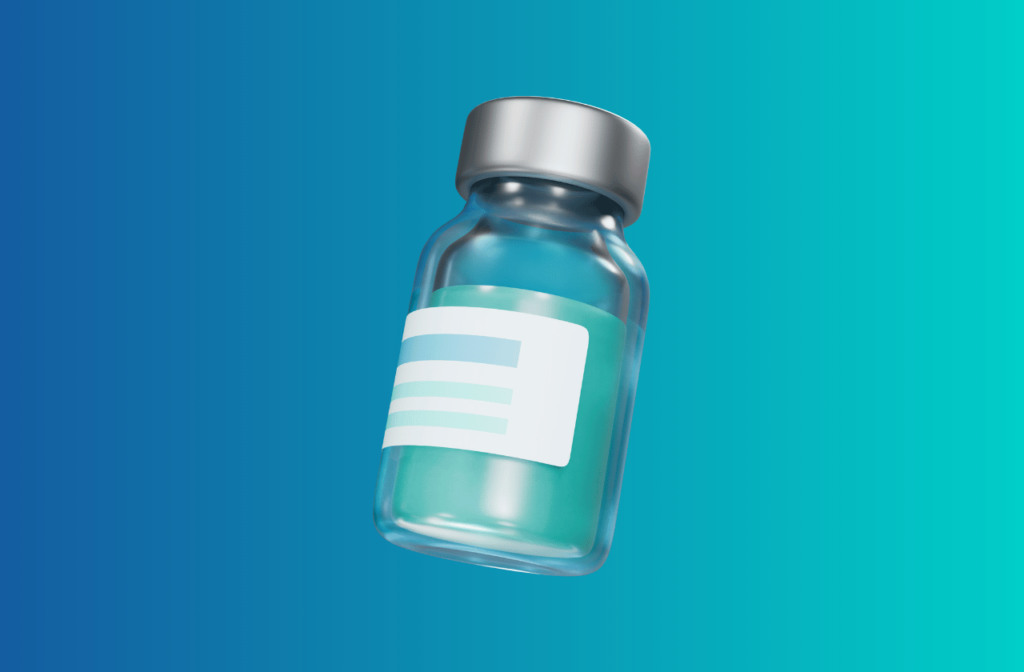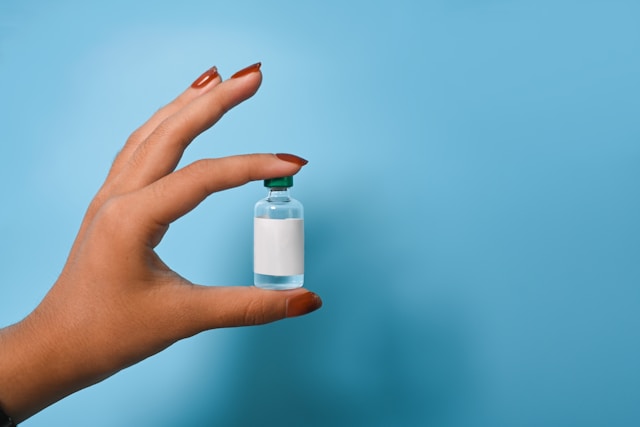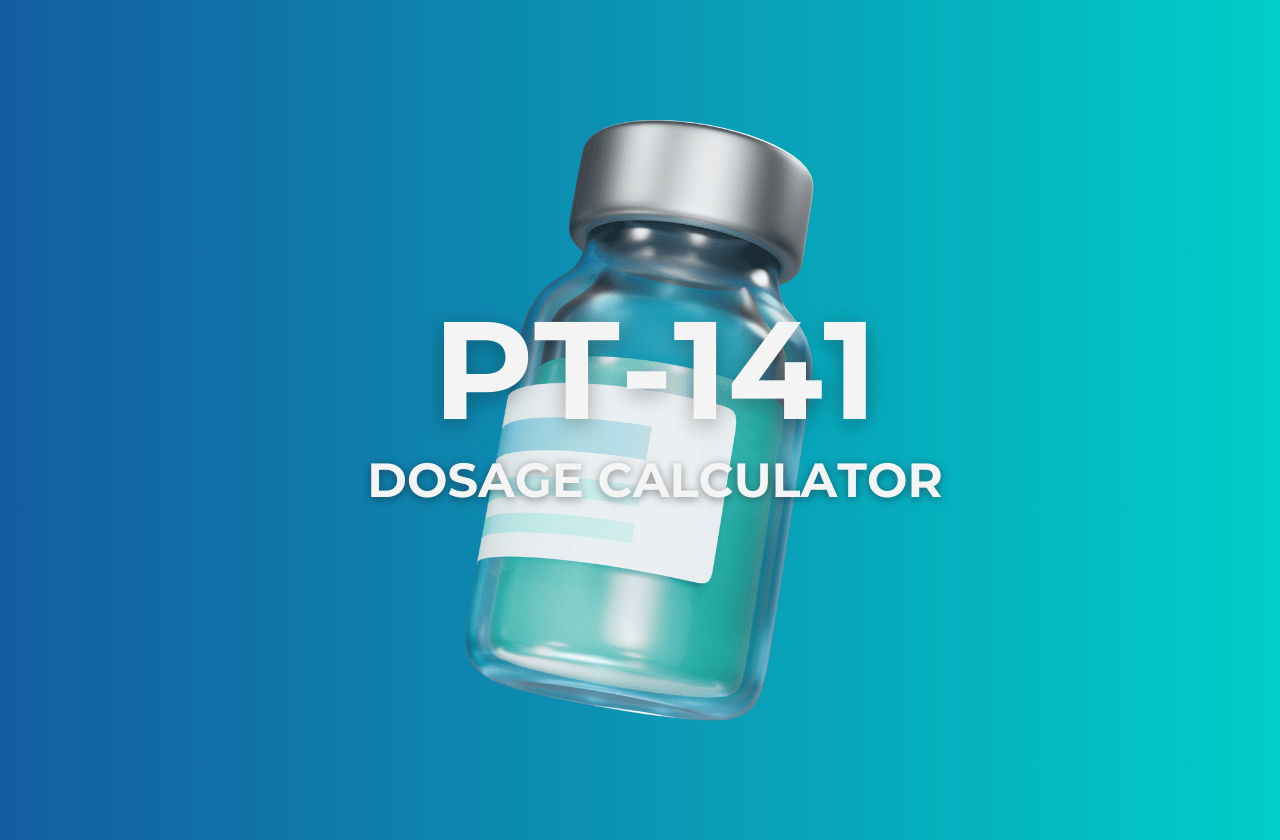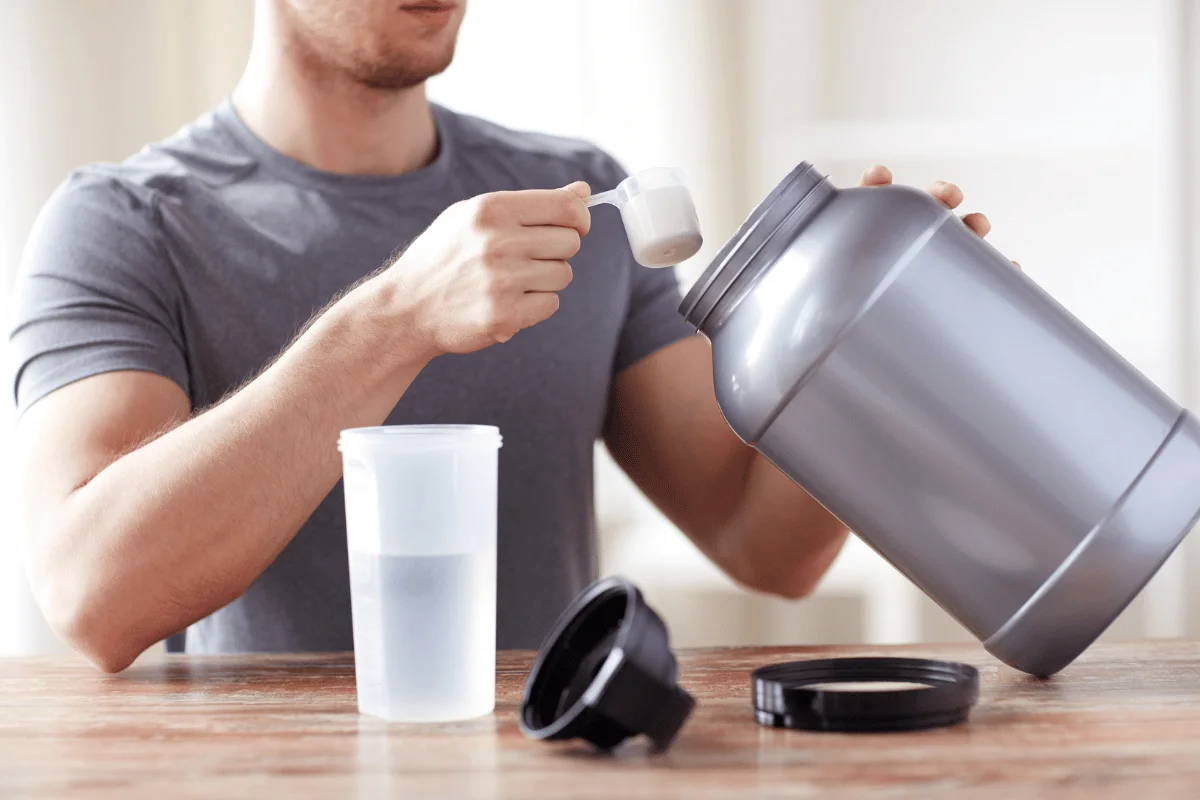[Disclaimer: This article is for informational purposes only and does not constitute medical advice. Always consult with a qualified healthcare provider before starting any peptide therapy.]
PT-141 (Bremelanotide) stands out from other sexual dysfunction treatments. Instead of targeting blood flow like traditional medications, it works through brain pathways to boost sexual performance and arousal.
Studies show PT-141 helps women with hypoactive sexual desire disorder (HSDD) and men with erectile dysfunction, especially when psychological factors are involved. The FDA approved PT-141 in 2019 as Vyleesi for treating HSDD in premenopausal women1, though it’s now commonly used off-label for other sexual issues.
PT-141 comes in different forms. The FDA-approved method is subcutaneous injection, but intranasal sprays are also available. The delivery method affects how the peptide works and what dosage you need.
Finding the right dose can be tricky. While the FDA has guidelines for women with HSDD, other uses rely on clinical experience and research.
This guide includes an interactive PT-141 dosage calculator based on your weight and administration method, along with safety information, potential side effects, and how to adjust dosing for individual factors.
Always use PT-141 under medical supervision, as responses vary from person to person.
PT-141 Dosage Calculator
PT-141 (Bremelanotide) Dosage Calculator
Weight-Based Dosage
Recommended total dose: 1.75 mg
Based on 70.0 kg body weight at 0.025 mg/kg
Administer subcutaneously 45 minutes before anticipated activity
Reconstitution Calculator
Concentration: 1.000 mg/mL (1000 mcg/mL)
Draw up: 1.750 mL to get 1.75 mg
Insulin syringe: 175.0 units (if using a U-100 syringe)
Usage Notes:
- FDA-approved dose: 1.75 mg subcutaneously for premenopausal women with HSDD
- Administration timing: 45 minutes before anticipated sexual activity
- Limit to a maximum of 8 doses per month and no more than 1 dose in 24 hours
- Common side effects include nausea (40%), flushing (20%), and headache (11%)
- Start with lower doses (0.5-1 mg) to assess tolerance before using full therapeutic doses
How to Use the Calculator
Weight-Based Dosage Calculator:
- Enter your body weight (in kg or lbs)
- Specify your desired dose per kg (typically 0.25-0.5 mcg/kg)
- The calculator will display your recommended total dose based on your parameters
Reconstitution Calculator:
- Enter the amount of PT-141 you have (in mg)
- Specify the volume of bacteriostatic water you’ll use (in mL)
- Input your target dose (in mcg)
The calculator will instantly provide:
- Your solution’s concentration (in mg/mL and mcg/mL)
- The precise volume needed to achieve your desired dose
- The equivalent measurement in insulin syringe units for accurate administration
Example: If you reconstitute 2mg of PT-141 with 2mL of bacteriostatic water, your solution will have a concentration of 1mg/mL (1000mcg/mL). To administer a 1.75mg dose (1750mcg), you would draw up 1.75mL, which corresponds to 175 units on a standard insulin syringe.
PT-141 Dosage Guidelines
Dosage recommendations for PT-141 vary based on administration method, intended use, and individual factors. Below is a summary of key dosing guidelines.

Standard Dosage Range
The typical therapeutic dose of PT-141 ranges from 1.75 mg to 2 mg per administration. This range has been established through clinical studies and represents the balance between efficacy and side effect management.
For most applications, a single administration at this dosage is used as needed, with specific timing recommendations depending on the intended use.
Weight-Based Dosing
Some recommend dosing PT-141 based on weight—usually about 0.025 mg per kilogram. This method tailors the treatment to your specific body type and helps establish an effective maintenance dose.
Important: PT-141 injection dosage should always remain below 2 mg to avoid serious side effects.
For example:
| Body weight (kg) | 0.025 mg/kilogram |
|---|---|
| 60 | 1.5 mg |
| 70 | 1.75 mg |
| 80 | 2.0 mg |
| 90 | 2.0 mg |
| 100 | 2.0 mg |
Administration-Specific Dosing
Subcutaneous Injection (FDA-Approved)
- Standard dose: 1.75 mg administered subcutaneously2
- Injection site: Abdomen or thigh
- Technique: Administered at a 45-degree angle
- Timing: At least 45 minutes before anticipated sexual activity
- Frequency limitations: No more than one dose per 24 hours and no more than 8 doses per month
Intranasal Spray (Alternative Method)
- Typical dose: Higher than injectable forms, with 10 mg used in clinical studies3
- Advantages: Less invasive, more convenient, faster absorption through nasal membranes
- Side effect profile: Typically milder than injection but includes nasal congestion and rhinorrhea
- Effectiveness: Studies showed significant improvement at 10 mg doses for erectile dysfunction
Population-Specific Dosage Recommendations
Premenopausal Women (HSDD – FDA-Approved)
- FDA-approved dose: 1.75 mg subcutaneously
- Administration timing: 45 minutes before sexual activity
- Frequency limitation: Maximum 8 doses per month
- Duration: Should be discontinued after 8 weeks if no improvement is observed
- Special consideration: Monitor for nausea, which affects 40% of patients at this dosage
Postmenopausal Women (Off-Label)
- Recommended dose: 1.75-2 mg (off-label)
- Administration timing: 45-60 minutes before sexual activity
- Special consideration: Higher risk of cardiovascular effects due to age-related changes
Men with Erectile Dysfunction (Off-Label)
- Typical dose: 1.75-2 mg
- Administration timing: 30-60 minutes before sexual activity
- Efficacy: May be more effective for psychological ED than physically-caused ED
- Response metrics: Studies showed increased erection rigidity at doses ≥1.0 mg, with mean duration of base rigidity ≥60% increasing from 18 to 73 minutes at doses of 1.0-10.0 mg3
Remember that individual responses to PT-141 can vary significantly. Starting with lower doses and adjusting based on response is generally recommended, particularly for off-label uses.
Third-Party Tested, 99% Purity
Order lab-verified peptides from our top recommended vendor.

Dosage Adjustment Considerations
For optimal results with PT-141, dosing should be personalized based on individual factors. Following these adjustment considerations can help maximize benefits while minimizing potential side effects.
“Start Low, Go Slow” Principle
Following the “Start Low, Go Slow” principle is recommended for all patients:
- Starting dose: 0.5-1 mg to assess tolerance
- Adjustment: Increase gradually if well-tolerated
- Monitoring: Observe for side effects before dose escalation
This cautious approach allows individuals to determine their personal response and tolerance before moving to full therapeutic doses.
Body Weight Considerations
Research suggests dosing based on body weight may be appropriate:
- Weight-based recommendation: 0.25-0.5 mg per kg
- Adjustment principle: Heavier individuals may require higher doses, while lighter individuals may require lower doses
Body composition affects drug distribution and metabolism, making weight an important factor in determining appropriate dosage.
Age-Related Adjustments
Age can significantly impact metabolism and response:
- Younger patients: May metabolize PT-141 more efficiently
- Older patients: May require lower doses due to decreased clearance
- Postmenopausal women: May have increased sensitivity to side effects
As we age, changes in liver and kidney function can affect how quickly medications are processed and eliminated from the body.
Medical History Factors
Pre-existing conditions may necessitate dosage modifications:
- Cardiovascular issues: Lower doses or avoidance if uncontrolled hypertension is present
- Hepatic function: Caution advised due to reported case of acute hepatitis
- Renal considerations: Excretion is primarily through urine (64.8%)
Always discuss your complete medical history with a healthcare provider before starting PT-141.
Individualization of Treatment
The most effective approach to PT-141 dosing is highly individualized:
- Response assessment: Track both benefits and side effects after each dose
- Timing adjustments: Some individuals may need more or less time between administration and activity
- Dose frequency: Determine optimal spacing between doses based on personal response
- Combination treatments: Consider how PT-141 interacts with other medications or treatments
Keep a journal of your experiences with different doses to help identify your optimal regimen. This information is valuable for consultation with healthcare providers to refine your treatment plan.
Remember that finding the right dose may require patience and several adjustments. Regular communication with your healthcare provider is essential throughout this process.
Side Effects by Dosage Level
The prevalence and severity of side effects with PT-141 may vary based on dosage level and administration route. Understanding these differences can help you and your healthcare provider choose the most appropriate dose for your situation.
Standard FDA-Approved Dose (1.75 mg Subcutaneous)4
| Side Effect | Prevalence |
|---|---|
| Nausea | 40.0% |
| Flushing | 20.3% |
| Injection site reactions | 13.2% |
| Headache | 11.3% |
| Vomiting | 4.8% |
Notes:
- Nausea typically occurs 30 minutes after administration and lasts for 2.4 hours.
- Most side effects at this dosage are mild to moderate and resolve without intervention within a few hours.
Contraindications and Safety Considerations
Several important contraindications and safety considerations must be evaluated before initiating PT-141 therapy.
Absolute Contraindications
PT-141 should be avoided in patients with:
- Uncontrolled hypertension: Due to its effects on blood pressure
- Cardiovascular disease: Transient increases in blood pressure may exacerbate underlying conditions
- Known hypersensitivity to the medication or its components
Cardiovascular Effects
Patients should be aware of potential cardiovascular impacts5:
- Blood pressure effects: Transient increase of approximately 1.9 mmHg in systolic and 1.7 mmHg in diastolic blood pressure
- Timing of effects: Peak increases typically occur 4-8 hours post-dose
- Resolution: Effects generally return to baseline within 12 hours
- Heart rate: Transient decrease of approximately 0.5 beats per minute
Dermatologic Considerations
Long-term use may lead to dermatologic changes2:
- Hyperpigmentation: Focal skin darkening affecting face, gingiva, and breasts reported in 1% of patients receiving up to 8 doses monthly
- Higher risk in daily use: 38% of patients developed focal hyperpigmentation after daily administration for 8 days
- Risk factors: Individuals with darker skin tone may be more susceptible
- Persistence: Changes may be permanent even after discontinuation
Hepatic Concerns
Although rare, hepatic effects have been reported2:
- Acute hepatitis: One case reported in a patient receiving 10 doses over one year
- Severity: Serum transaminases exceeded 40 times the upper limit of normal
- Resolution: Liver function normalized within 4 months after discontinuation
Conclusion: Making Informed Decisions About PT-141
PT-141 works differently than other treatments by targeting the central nervous system rather than blood vessels to treat sexual dysfunction. The FDA-approved dose for premenopausal women with HSDD is 1.75 mg by injection, which balances effectiveness and side effects. Similar doses are often used off-label for men with erectile dysfunction.
Side effects change based on dose amount and delivery method. Nausea is the most common side effect at standard doses, while nasal sprays generally cause fewer side effects overall.
For best results, healthcare providers should start with small doses (0.5-1 mg) to check how well patients tolerate it before increasing to full treatment doses. Personal factors like age, weight, and medical history should guide each patient’s dosing plan.
As research continues to evolve, our understanding of optimal PT-141 dosages will likely become more refined. Regular monitoring and open communication between patients and healthcare providers remain essential for maximizing benefits while minimizing risks.
- https://www.accessdata.fda.gov/drugsatfda_docs/nda/2019/210557Orig1s000MultidisciplineR.pdf ↩︎
- https://www.drugs.com/monograph/bremelanotide.html ↩︎
- https://pmc.ncbi.nlm.nih.gov/articles/PMC7752520/ ↩︎
- https://dailymed.nlm.nih.gov/dailymed/drugInfo.cfm?setid=9146ae05-918b-483e-b86d-933485ce36eb ↩︎
- https://www.drugs.com/sfx/bremelanotide-side-effects.html ↩︎








